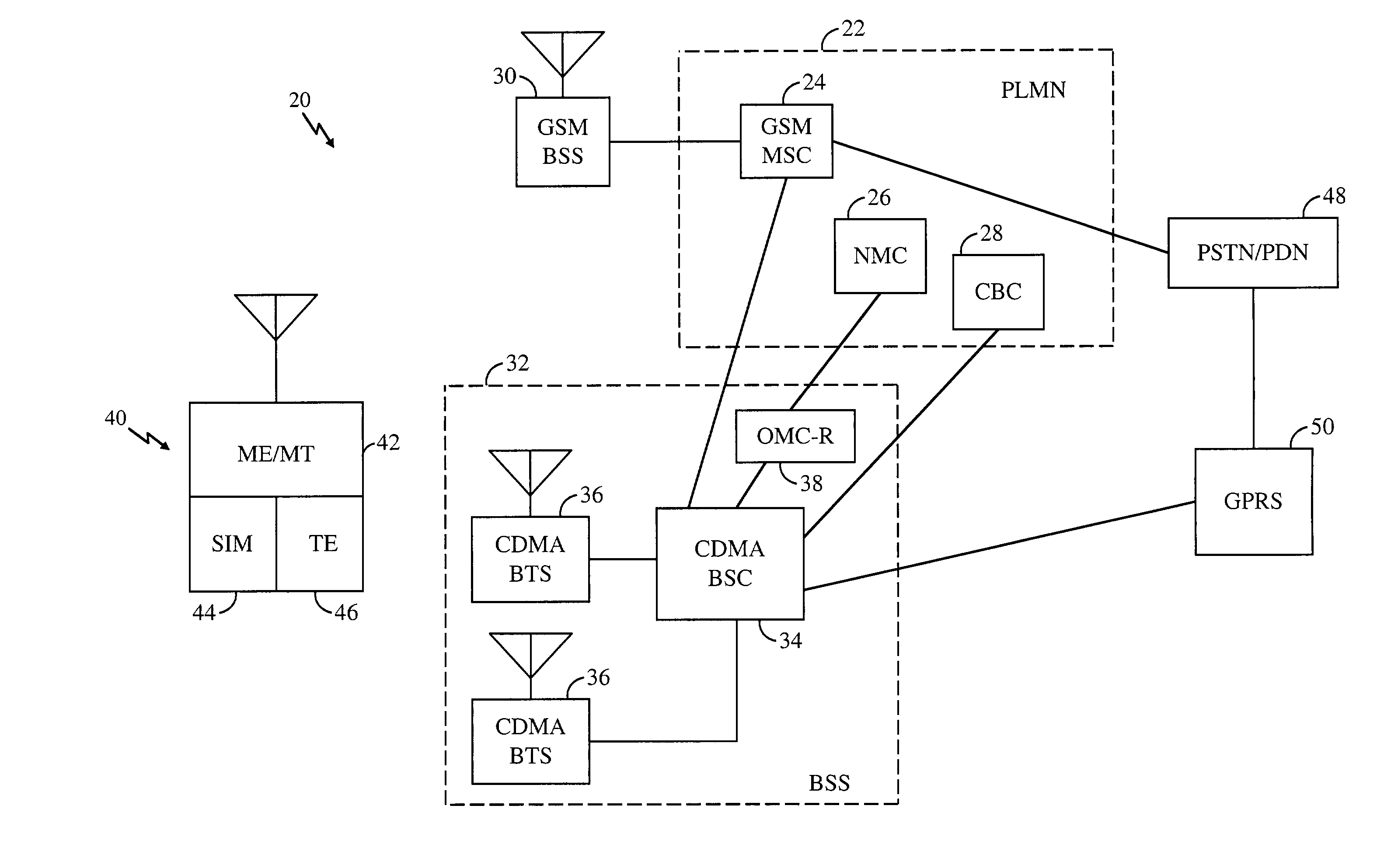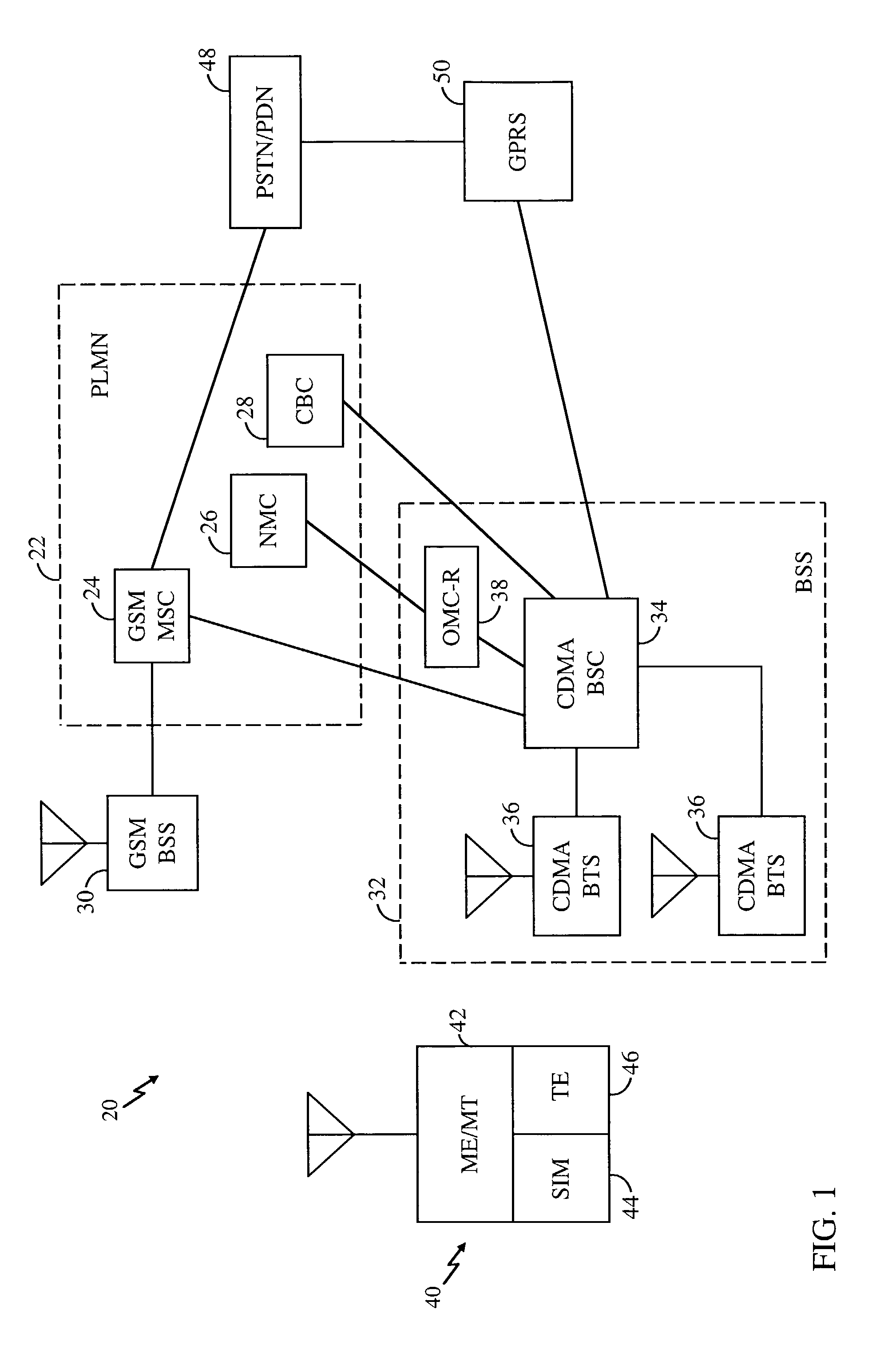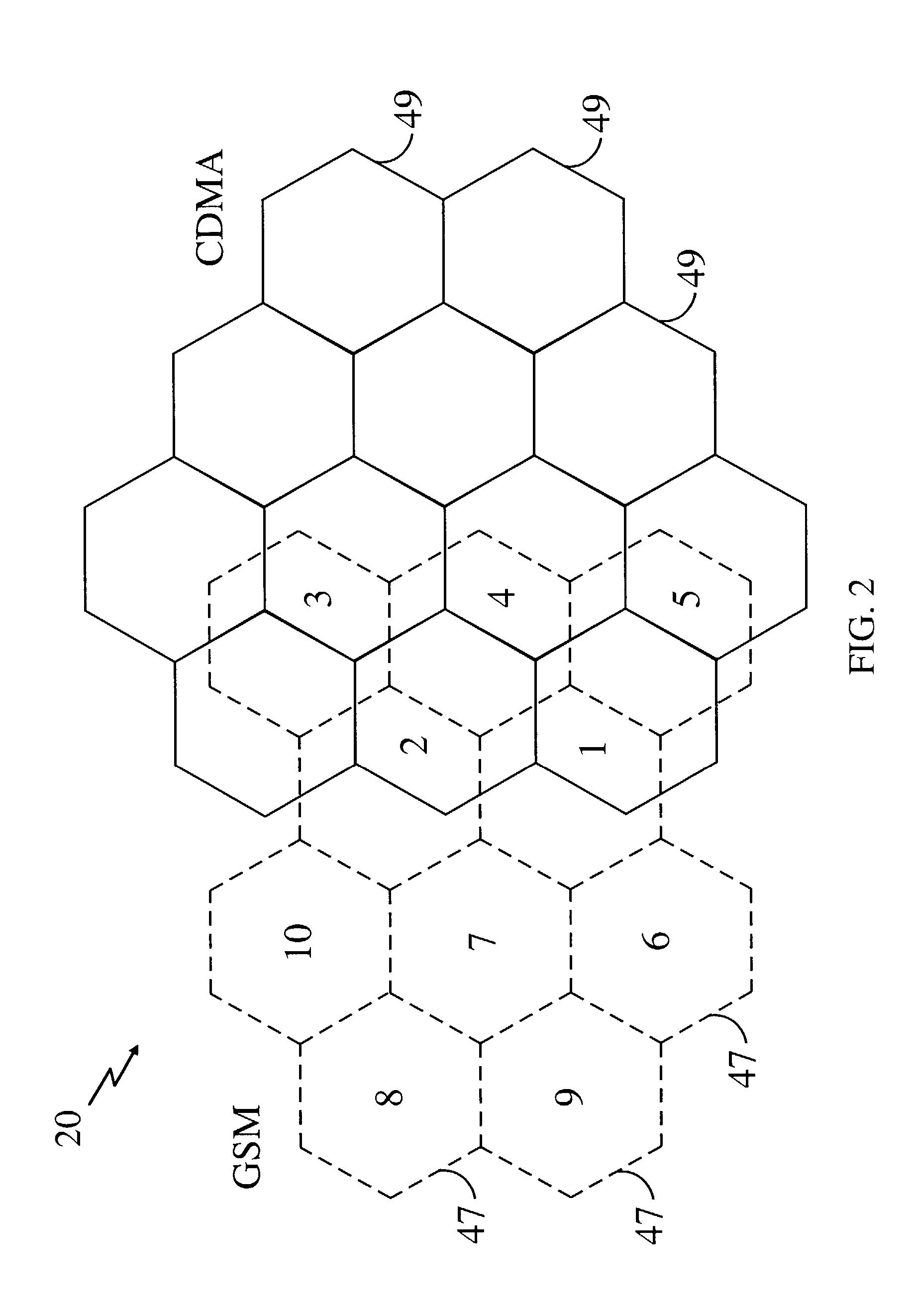Idle mode handling in a hybrid GSM/CDMA network
a technology of gsm/cdma network and idle mode, applied in the field of wireless telecommunications, can solve the problems of not dealing with specific issues of efficient handover and idle mode operation, and achieve the effects of avoiding abrupt loss of coverage, reducing idle activity, and saving battery li
- Summary
- Abstract
- Description
- Claims
- Application Information
AI Technical Summary
Benefits of technology
Problems solved by technology
Method used
Image
Examples
Embodiment Construction
General Features of a Hybrid GSM / CDMA Cellular System
[0102]Reference is now made to FIG. 1, which is a schematic block diagram of a hybrid GSM / CDMA cellular communications system 20, in accordance with a preferred embodiment of the present invention. System 20 is built around a public land mobile network (PLMN) 22, which is based on GSM network protocols, as described hereinabove. Although for the sake of simplicity, only one PLMN is shown in FIG. 1, there may be multiple, different networks of this sort through which subscriber units can communicate.
[0103]PLMN 22 comprises at least one mobile-services switching center (MSC) 24, or possibly a number of such centers (although only one MSC is shown here for clarity of illustration), which controls network operations within a geographical area. Among other functions, MSC 24 is responsible for location registration of subscriber units and handover of subscriber units between base stations, as well as linking PLMN 22 to a public switched...
PUM
 Login to View More
Login to View More Abstract
Description
Claims
Application Information
 Login to View More
Login to View More - R&D
- Intellectual Property
- Life Sciences
- Materials
- Tech Scout
- Unparalleled Data Quality
- Higher Quality Content
- 60% Fewer Hallucinations
Browse by: Latest US Patents, China's latest patents, Technical Efficacy Thesaurus, Application Domain, Technology Topic, Popular Technical Reports.
© 2025 PatSnap. All rights reserved.Legal|Privacy policy|Modern Slavery Act Transparency Statement|Sitemap|About US| Contact US: help@patsnap.com



